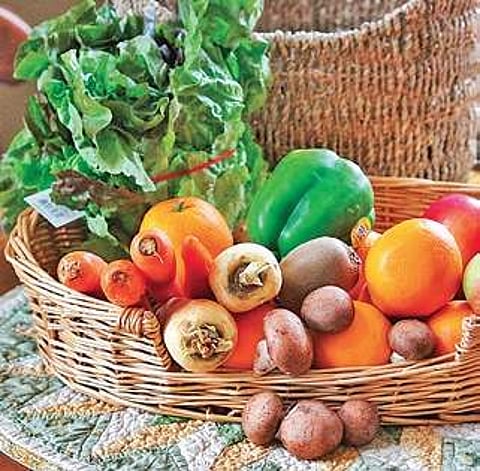

Last week I talked about how the deficiency of iron impacts the many aspects of our well-being by lowering our work capacity, mental concentration and immunity to infections.
As a nutritionist, I work to generate awareness about the good food sources of iron and how best to consume them. While I do that as best as I can, I worry about the fact that several nutrients – particularly iron and protein – are being depleted from our very basic food sources i.e. crops.
This is happening because of climate change, and we’re contributing to this troubling process in a big way.
I had often heard the elderly comment on how the fruits and veggies that they ate in their childhood tasted more flavourful, but I had discounted this as something people say as they grow older.
Now there seems to be evidence to support the fact that the nutrient profile of foods grown is actually changing, perhaps also contributing to the change in flavour. Since the year 2000, there have been reports about how food grown today is less nutritious than earlier times.
A report in the Journal of Complementary Medicine in 2001 highlighted the fact that the statistics from the governments of the US and the UK illustrate a significant decline in trace elements found in fruits and vegetables over the period 1940 to 1991.
A significant decline in minerals too was also found in milk samples.
One of the theories for loss of nutrient profile of foods points towards the increased carbon footprint due to a range of our everyday activities. Eating a diet that is local, seasonal and dominantly plant-based is one way we can decisively reduce our carbon footprint.
The altered nutrient content of commonly consumed crops such as rice, wheat, maize and soy has been noted in two landmark studies.
In one of these studies, where 130 different crop varieties grown with high CO2 levels were analysed, the mineral levels in the crops had decreased by 8%, which included the level of iron.
While the minerals dwindled, the carbohydrate content went up in the same crop, which is not desirable considering we are plagued with a huge population suffering from diabetes and heart disease.
The other study revealed that wheat grown with high CO2 levels had 6.3% less protein, 9.3% less zinc and 5.1% less iron. Zinc, like iron, promotes good immunity. Significant losses in the B vitamins have also been noted.
For those of you who may think that these numbers don’t indicate alarming losses, let me remind you that a large population in our country derives its minerals and proteins exclusively from cereals like rice and wheat.
A depreciation of nutrients in such crops due to climate change is surely reason for worry. Food fortification techniques could surely help counter this loss, but it’s time to tackle the real issue – climate change – a threat to our very existence.
Neelanjana Singh
Nutrition Therapist & Wellness Consultant